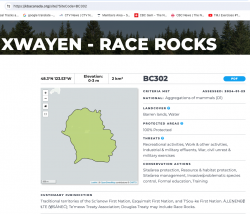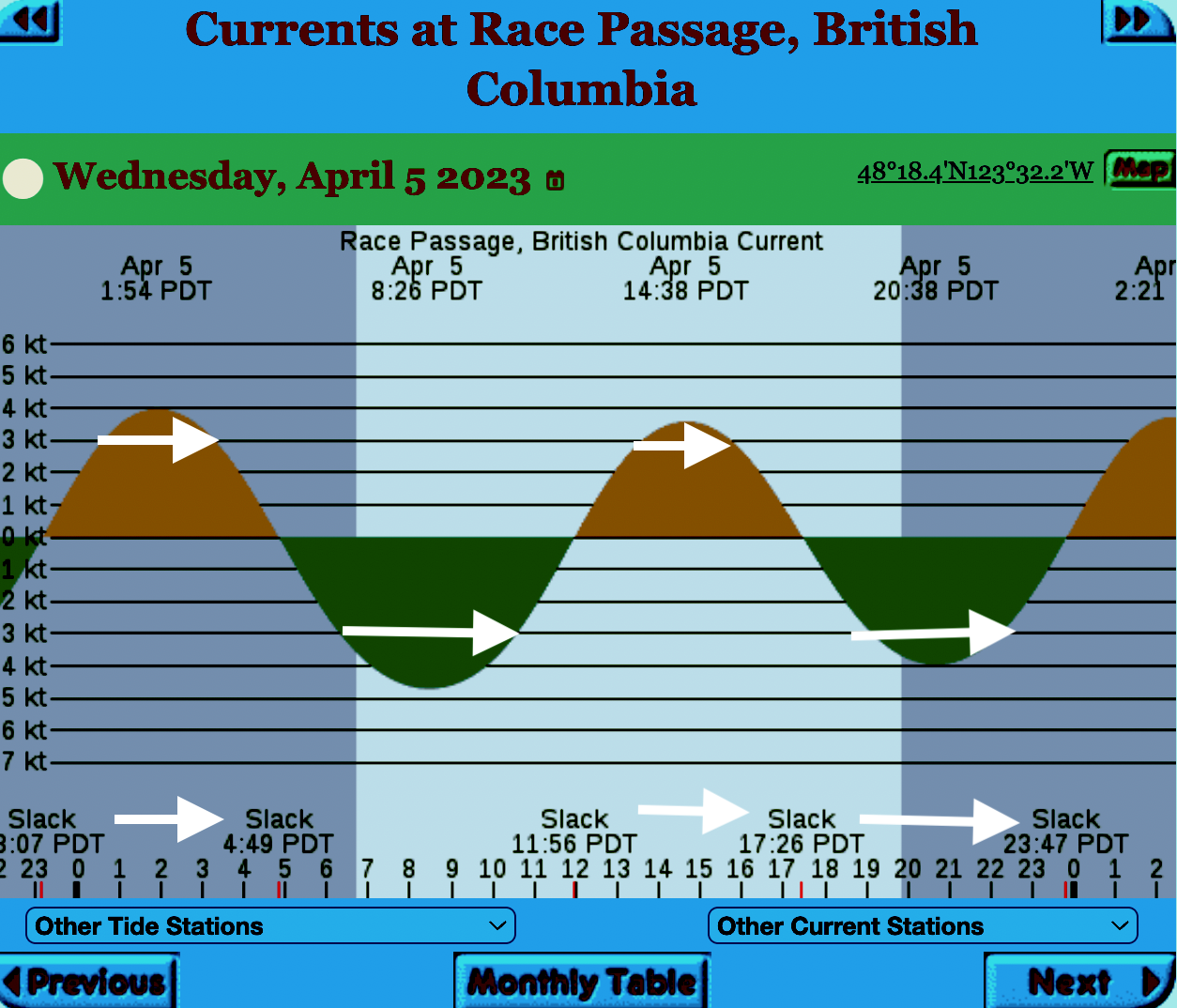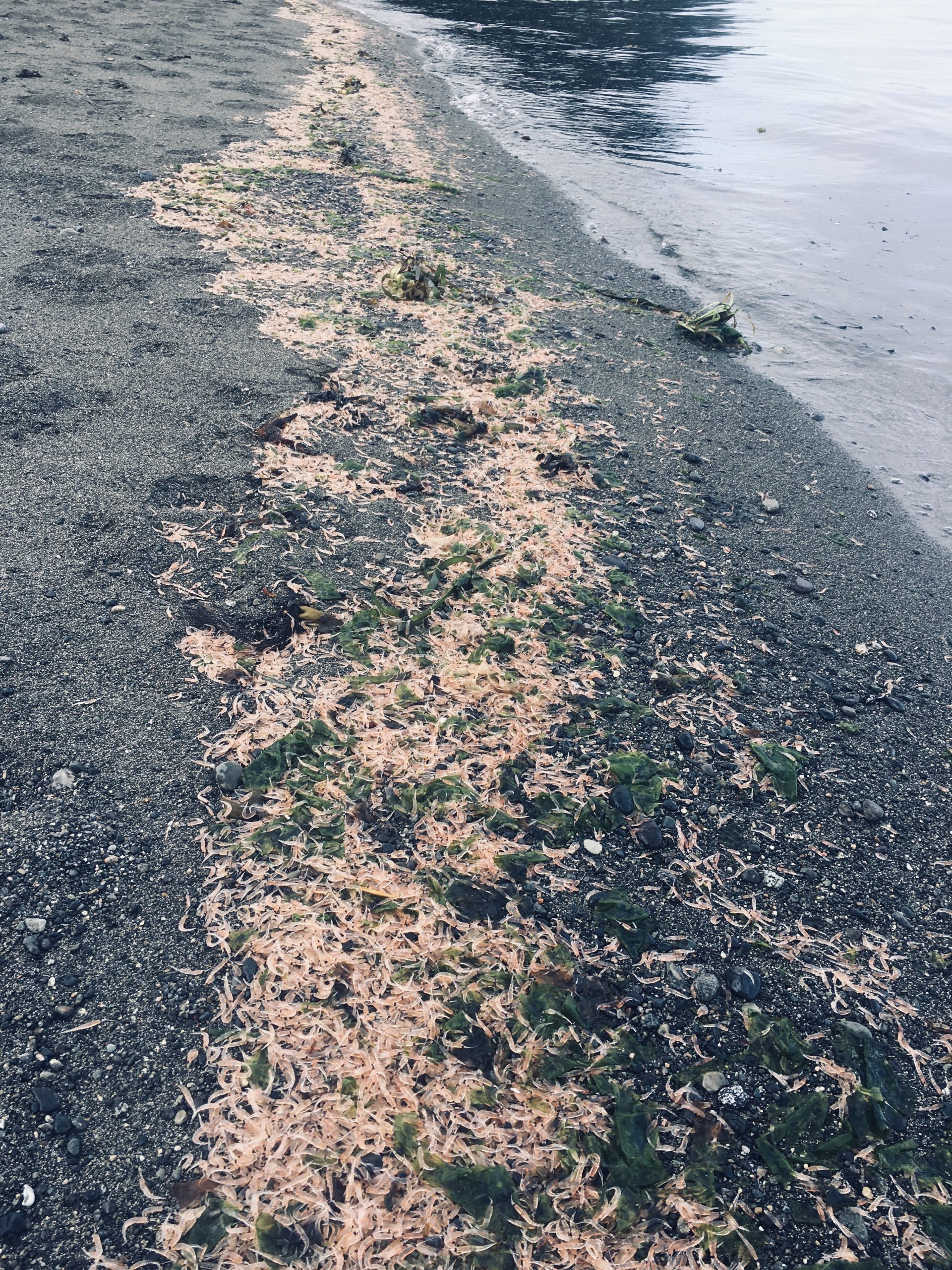The following article has been published in the Metchosin Muse:
Witty’s Beach joins other KBAs in the Victoria area :
 The other local KBA designation is at Race Rocks Ecological Reserve
The other local KBA designation is at Race Rocks Ecological Reserve

The following article has been published in the Metchosin Muse:
Witty’s Beach joins other KBAs in the Victoria area :
 The other local KBA designation is at Race Rocks Ecological Reserve
The other local KBA designation is at Race Rocks Ecological Reserve
The full pdf of this report is contained in this pdf:
BC EAO Condition 39 Exisitng Shoreline Conditions Report – May 2023 – for engagement
The purpose of this posting is to reference the part of the report referring to Metchosin’s coastline and to provide comment on it.
===========================================================
 From page 4 of the REPORT:
From page 4 of the REPORT:
1 Introduction
As defined by the amendment to Trans Mountain’s BC Environmental Assessment Certificate (EAC) issued by the Province of British Columbia (the Province) on February 24, 2022, Trans Mountain must prepare an Existing Shorelines Condition Report and submit to the Province within 18 months (August 2023) as Condition No. 39.
Polaris Applied Sciences was retained to prepare a report containing shoreline baseline data for shoreline areas closest to spill scenario locations modeled along the marine shipping route and submitted in the Project application. The Province listed the specific scenario locations for the purpose of this study (Figure 1) as:
 Page 25
Page 25
Strait of Juan de Fuca (south of Race Rocks) (Location G);
Figure 18 shows the Location G – Race Rocks site with the available existing spatial data. Shoreline data are from the Shorezone mapping effort available from the BC Data Catalogue, which show the shore type consisting of rock cliff. Shore-zone Bioband data indicate the presence of barnacles, dark brown kelps, fucus, bull kelp, red algae, surf grass, and Verrucaria. Other data sources indicate offshore kelp beds and multiple seal and sealion haulouts. The Race Rocks Ecological Reserve (RRER) website (https://racerocks.ca/home/) provides more details on ecological resources documented and studied at the site, but not in a spatial format for mapping.
COMMENTS : The exceptionally high Biodiversity of the area and high level of protection since 1980 as a Provincial Ecological Reserve are not reflected at all in the map presented. If one were to look at the Race Rocks Taxonomy presented at https://racerocks.ca/race-rocks-animals-plants/taxonomy-image-gallery/ there may be a better appreciation of the natural capital of this area
===============================================================
Page 26
Comments:
The reference at the Race Rocks website from racerocks.ca which analyzes the Wind speed from observations of the hourly data provided by Environment Canada show a completely different picture . https://racerocks.ca/race-rocks-lightstation-weather-conditions-environment-canada-problems-for-oil-spill-cleanup/
Some facts from the Environment Canada data:
1. In July of 2022 there were 11 days when the wind speed every hour was 28 km/hr or greater. and 69.5% of the hours in the month, clean up equipment could not be deployed due to high velocity wind conditions.
2. In March of 2023, the wind speed was 28 km/hr or greater 37% of the time.
3. In Februarry of 2023 , the wind speed was 28 km/hr or greater 43 % of the time
4. In January of 2023 , the wind speed was 28 km/hr or greater 36% of the time
============================================================
================================================
The reality of current speed is that there is a very small window of time during the day that the waters around Race Rocks are not over three knots. In the graph below only in the few hours a day not covered by the white arrows could any boom placement be established. WHen looked at from this perspective, added onto the small windows of time when the wind speed is under 28 km per hour could spilled oil containment even be possible.

=============================================================
 From page 28 of the Polaris report
From page 28 of the Polaris report
Field surveys were not conducted at Race Rocks due to the long lead time in acquiring a “research” permit from BC Parks to access the Ecological Reserve. Information detailed below comes from reviewing the existing data available, Google Earth, the RRER website, and a First Nations representative.
The shoreline at Race Rocks, specifically Great Race Rock, appears to be mostly bedrock cliff, ramp, and platform, possibly with some small pocket pebble/cobble beaches. Bedrock cliffs and ramps are observable in Figure 21 which show some example photographs from the Race Rocks Ecological Reserve website. The backshore appears to be mostly bedrock with some vegetation.
An active lighthouse along with several other buildings are present. Pearson College UWC conducts research and teaches classes at the site. Whale and sightseeing boats frequent the waters around Great Race Rock and are visible from photographs on the Race Rocks website and on Google Earth.
As mentioned before, Race Rocks is a BC Parks Ecological Reserve which are “areas selected to preserve representative and special natural ecosystems, plant and animal species, features and phenomena. Scientific research and educational purposes are the principal uses of ecological reserves”7. A wide variety of ecological resources are documented, tracked, and studied at the site. This documentation includes a weekly animal census, annual bird counts, and an entire list of species ever documented with photos/videos since 2000 (https://racerocks.ca/race-rocks-animals-plants/taxonomy-image-gallery/). Additional research conducted at the site can also be found on the RRER website. The extensive use of the site as a haulout location by pinnipeds is documented on the website and visible on Google Earth.
This area has historically been used by First Nations for harvesting food, as documented on the Race Rocks website, and a First Nations representative indicated that fishing is common in the waters around the site. Burial mounds/cairns have been researched and documented on Great Race Rock.
A helicopter pad is located near the lighthouse.
Based on the available data, and without visiting Race Rocks, the Shorezone mapping appears to be relatively accurate. The detailed observation of the flora and fauna on the Race Rocks website and other research conducted by Pearson College provides the most thorough documentation of the ecological resources present compared to any of the other sites visited.
7 https://bcparks.ca/eco_reserve/
================================================================
On February 9, 2023 Deidre Chettleburgh and her grandson Ben retrieved this 37 cm wolf eel from the strand line on Taylor beach.
Although the experts on iNaturalist identified it as a wolf eel, (https://inaturalist.ca/observations/148414762 ) this description of a juvenile wolf eel from Wikipedia doesn’t really fit . ???
“Younger wolf eels are orange with big dark spots in the posterior part of the body. Once older they turn grey, brown greyish or dark olive.”[7][8]
This individual was very dark black. Also in my many years of Diving around Race Rocks Ecological Reserve I never saw anything like it.
https://racerocks.ca/anarrhichthys-ocellatus-wolf-eel-the-race-rocks-taxonomy-2/
Classification from Wikkipedia:
| Kingdom: | Animalia |
| Phylum: | Chordata |
| Class: | Actinopterygii |
| Order: | Scorpaeniformes |
| Family: | Anarhichadidae |
| Genus: | Anarrhichthys Ayres, 1855 |
| Species: |
A. ocellatus
|
| Binomial name | |
|---|---|
| Anarrhichthys ocellatus
Ayres, 1855
|
|
The determination of the natural boundary of the coastline is important in establishing ownership of property and therefore public access along a coastline: The following reference may help clarify this .
Healthy coastal ecosystems are essential for maintaining biodiversity and liveable coastal communities, providing critical habitat, water quality protection, food and medicinal plants for harvesting, lessening of coastal erosion, resilience to climate change, and flood regulation.
Perhaps less well known is that coastal ecosystems also play an important role in long-term carbon storage and sequestration. This paper looks at emerging policy opportunities and needs in Canada, and specifically British Columbia, for “blue carbon” – the carbon stored in vegetated coastal ecosystems – and how protecting blue carbon as a climate action measure aligns with coastal biodiversity protection and resilience more broadly.
Today an event that I had never seen before occurred on Taylor Beach. Millions of tiny Euphasids or Krill ended up on a 600 metre section of the beach North of Taylor Road . Many of the krill were still alive , but the majority were dead and they were accumulating as the tide came in. I have no idea what the cause of this is, but it was reported to have happened to the north on Witty’s Beach as well today.
I have no idea what the cause of this is, but it was reported to have happened to the north on Witty’s Beach as well today.
| Northern krill (Meganyctiphanes norvegica) | |
| Scientific classification | |
|---|---|
| Kingdom: | Animalia |
| Phylum: | Arthropoda |
| Subphylum: | Crustacea |
| Class: | Malacostraca |
| Superorder: | Eucarida |
| Order: | Euphausiacea Dana, 1852 |
submitted to iNaturalist: https://inaturalist.ca/observations/88785677
These are very abundant in Gooch Creek which runs onto Taylor Beach
Kingdom: Animalia
Phylum: Chordata
Class: Actinopterygii
Order: Scorpaeniformes
Family: Gasterosteidae
Genus: Gasterosteus
Species: G. aculeatus
This is an important new publication by West Coast Environmental Law
Guide to Coastal & Ocean Protection Law in BC (PDF)

Subject: Marine Protection, Coastal and Ocean LawsAuthor: Stephanie Hewson, Linda Nowlan, Georgia Lloyd-Smith, Deborah Carlson & Michael Bissonnette
Summary:
Are you concerned about the health of your local shoreline, and wondering what your government(s) can do to help? Curious about the complex web of laws, policies and regulations governing the BC coast and ocean? Interested in learning how different authorities and jurisdictions can work together?
Our Guide to Coastal and Ocean Protection Law in BC is a comprehensive resource that covers the wide array of legal tools available to Indigenous, federal, provincial and local governments to protect the coast and ocean in BC.
In addition to being a resource on marine spatial protection law, this Guide is a record of what has been accomplished on the Pacific coast over the last several decades – providing examples that demonstrate how different legal tools have been employed to preserve the health of coastal and marine ecosystems.
This Guide was developed with the generous support of the Sitka Foundation and the Gordon & Betty Moore Foundation. Publication Date: December 3, 2020Publication Pages: 324Publisher: West Coast Environmental LawPublication Format: PDF